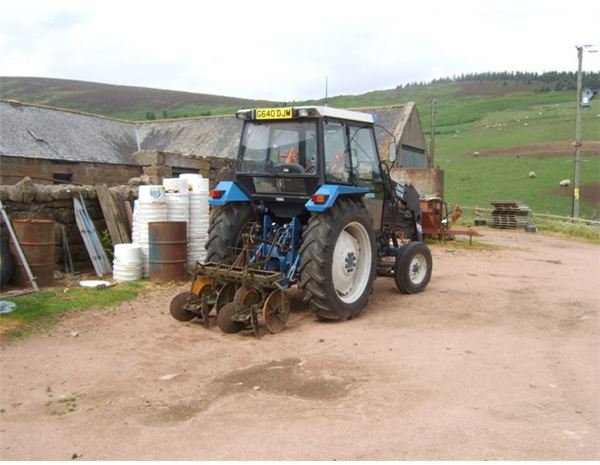An Illustration of a Capital Budget: Example Using Farm Operations
Capital budgeting or investment appraisal is the budget for investments and expenditures of a non-recurring nature. It aims at determining the financial viability of long term investments such as new or replacement machinery, products, and projects, by determining whether the perceived benefits exceed the cash outflow.
To illustrate capital budget example, consider a hypothetical farm, with the land and power already in place. The capital required to make the farm business operational include:
- Farm equipment such as a tractor, tiller, manure spreader, transplanting machine, and others
- Vehicle to transport produce, manure, and other equipment
- Shed to store farm equipment
- Shed to store harvest
- Well and water tank
- Access roads
- Irrigation facility
- Transplant greenhouse
- Office space
- Parking shed for tractor and vehicles
- Rest room and accommodation for farm laborers
- Working capital for seeds, fertilizers, manure, and start up administrative costs
All these line-items require a one time major investment and find use in farm operations. The first step in capital budgeting is listing out the amount incurred for each of these items and determining the total capital required.
Cost Benefit Analysis
One significant dimension of a capital budget analysis is making trade offs, or a cost benefit analysis of the various options.
For example, in the capital budget example of farm operations mentioned above, one trade off would be between buying a new tractor or a used tractor.
An used John Deere 2040 tractor might cost $4,000 as opposed to about $22,000 for a brand new tractor of the same model. Assuming the used tractor requires repairs worth $4,000 to make it operational, the trade off is between $22,000 for a new tractor and $8,000 for a used tractor.
The used tractor incurs higher annual maintenance costs, however. Assume the used tractor incurs a maintenance cost of $2,100 per year versus the $100 maintenance cost for the new tractor covered by warranty. The savings in capital on buying a used tractor, $22,000 - $8,000 = $14,000 comes at $2,100 - $100 = $2,000 annual maintenance costs for the used tractor.
If the additional capital of $14,000 required for the new tractor returns more than $2,000 per annum, or 14.2 percent, purchasing a used tractor is the better option. If the cost of capital is less than 14.2 percent, or $14,000 deployed elsewhere returns less than $2,000 per annum, a better use of the capital is to purchase a new tractor rather than the old tractor.
In actual life, factoring deprecation or life of the new and old tractor complicates the equation.
Time Value of Money
Two common methods of capital budgeting are Net Present Value (NPV) and Internal Rate of Return (IRR), based on the principle of time value of money.
The Net Present Value capital budgeting procedure aims at ascertaining the present value of expected future cash inflows that result from the expenditure. Investors and businesses commit to capital expenditures with positive or at least zero NPV, for negative NPV denotes the cost of investment being more than the expected benefits.
For instance, if the total investment to set up the farm in the capital budget example above is $100,000 and the present value of the net profits from operation of the farm during the expected lifecycle of 20 years, when depreciation would completely erode the value of investments is $150,000, the NPV is $150,000 - $100,000 = $50,000, which indicates a profitable NPV. If the present value of the net profits from farm operations is however, say only $80,000 during the 20 year lifecycle, the NPV is $80,000 - $100,000 = $-20,000, indicating a negative NPV and a bad capital investment.
Internal Rate of Return (IRR) is the discount rate at which the present value of the future cash inflows that derive from the capital expenditure is zero. Companies and investors commit to capital expenditure when the IRR is greater than the minimum rate of return for the capital. For instance, if the capital of $100,000 employed in farm operations would otherwise earn $12,000 per annum, the cost of capital is 12 percent. The investment in farm becomes profitable only if the IRR is greater than or equal to 12 percent.
Other ways of capital budgeting procedures are adjusted present value, payback period, discounted payback period, profitability index, accounting rate of return, and modified internal rate of return (MIRR).
References
- Dayananda, Don et. al. “Capital Budgeting.” Retrieved from https://assets.cambridge.org/97805218/17820/sample/9780521817820ws.pdf on April 19, 2011.
- Prairie Crossing Farms. “Sample Capital Budget.” Retrieved from https://www.prairiecrossingfarms.com/samplecapitalbudget.pdf on April 19, 2011.
- Murray State University. “Capital Budgeting Techniques.” Retrieved from https://campus.murraystate.edu/academic/faculty/larry.guin/FIN330/CapBudTechniques.htm on April 19, 2011.
- “Capital Budgeting.” https://www.willamette.edu/~fthompso/501/Fin10.pdf
Image Credit: geograph.org.uk/Stanley Howe
